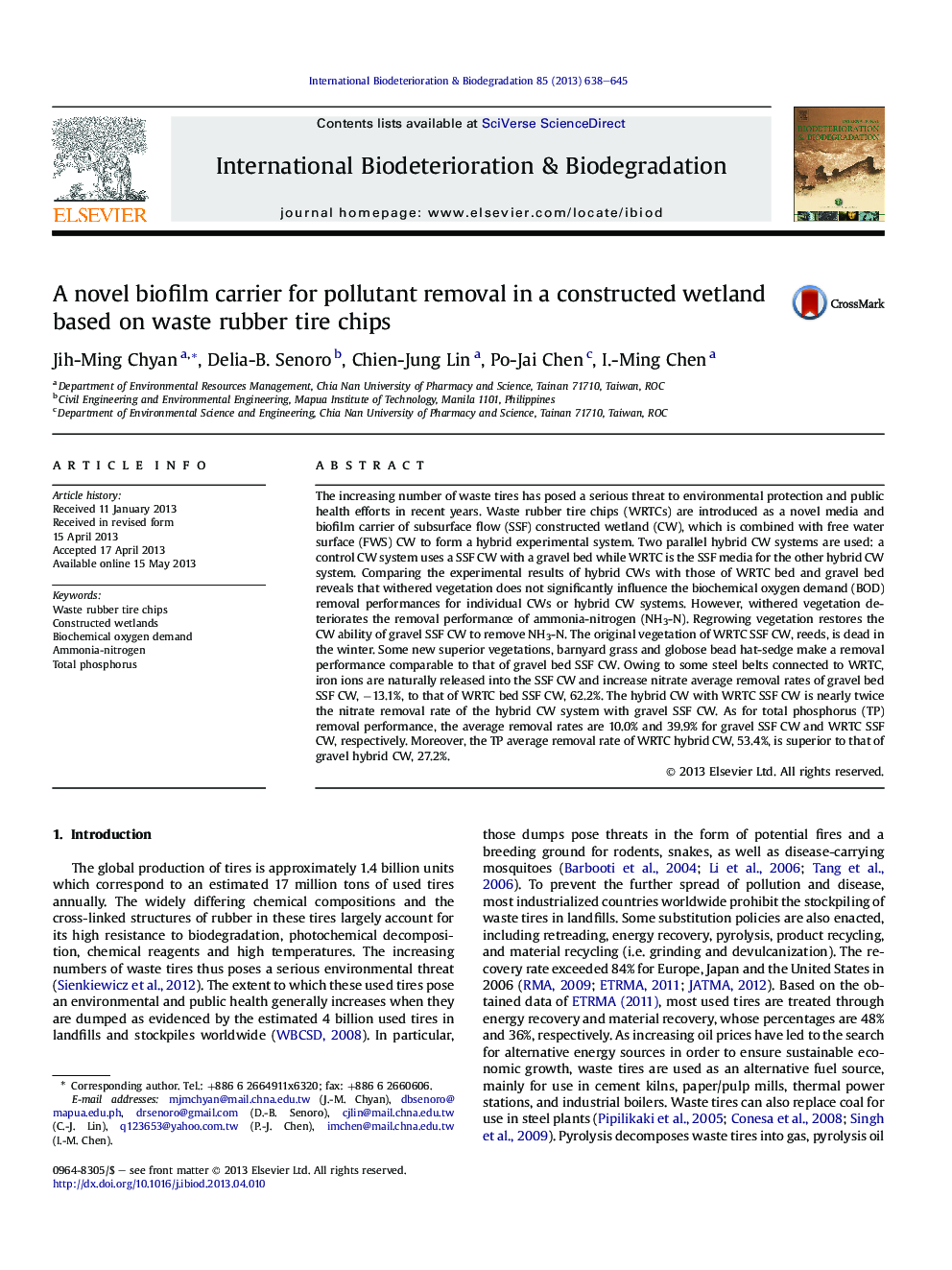| کد مقاله | کد نشریه | سال انتشار | مقاله انگلیسی | نسخه تمام متن |
|---|---|---|---|---|
| 6289387 | 1616330 | 2013 | 8 صفحه PDF | دانلود رایگان |
عنوان انگلیسی مقاله ISI
A novel biofilm carrier for pollutant removal in a constructed wetland based on waste rubber tire chips
ترجمه فارسی عنوان
یک رشته بیوفیلم جدید برای حذف آلاینده ها در یک تالاب ساخته شده بر اساس تراشه های لاستیک زنجیره ای زباله
دانلود مقاله + سفارش ترجمه
دانلود مقاله ISI انگلیسی
رایگان برای ایرانیان
کلمات کلیدی
تراشه لاستیک خمیر لاستیکی، تالاب های ساختمانی، بیوشیمیایی نیاز به اکسیژن، آمونیاک-نیتروژن، کل فسفر،
موضوعات مرتبط
علوم زیستی و بیوفناوری
علوم محیط زیست
علوم زیست محیطی (عمومی)
چکیده انگلیسی
The increasing number of waste tires has posed a serious threat to environmental protection and public health efforts in recent years. Waste rubber tire chips (WRTCs) are introduced as a novel media and biofilm carrier of subsurface flow (SSF) constructed wetland (CW), which is combined with free water surface (FWS) CW to form a hybrid experimental system. Two parallel hybrid CW systems are used: a control CW system uses a SSF CW with a gravel bed while WRTC is the SSF media for the other hybrid CW system. Comparing the experimental results of hybrid CWs with those of WRTC bed and gravel bed reveals that withered vegetation does not significantly influence the biochemical oxygen demand (BOD) removal performances for individual CWs or hybrid CW systems. However, withered vegetation deteriorates the removal performance of ammonia-nitrogen (NH3-N). Regrowing vegetation restores the CW ability of gravel SSF CW to remove NH3-N. The original vegetation of WRTC SSF CW, reeds, is dead in the winter. Some new superior vegetations, barnyard grass and globose bead hat-sedge make a removal performance comparable to that of gravel bed SSF CW. Owing to some steel belts connected to WRTC, iron ions are naturally released into the SSF CW and increase nitrate average removal rates of gravel bed SSF CW, â13.1%, to that of WRTC bed SSF CW, 62.2%. The hybrid CW with WRTC SSF CW is nearly twice the nitrate removal rate of the hybrid CW system with gravel SSF CW. As for total phosphorus (TP) removal performance, the average removal rates are 10.0% and 39.9% for gravel SSF CW and WRTC SSF CW, respectively. Moreover, the TP average removal rate of WRTC hybrid CW, 53.4%, is superior to that of gravel hybrid CW, 27.2%.
ناشر
Database: Elsevier - ScienceDirect (ساینس دایرکت)
Journal: International Biodeterioration & Biodegradation - Volume 85, November 2013, Pages 638-645
Journal: International Biodeterioration & Biodegradation - Volume 85, November 2013, Pages 638-645
نویسندگان
Jih-Ming Chyan, Delia-B. Senoro, Chien-Jung Lin, Po-Jai Chen, I.-Ming Chen,
